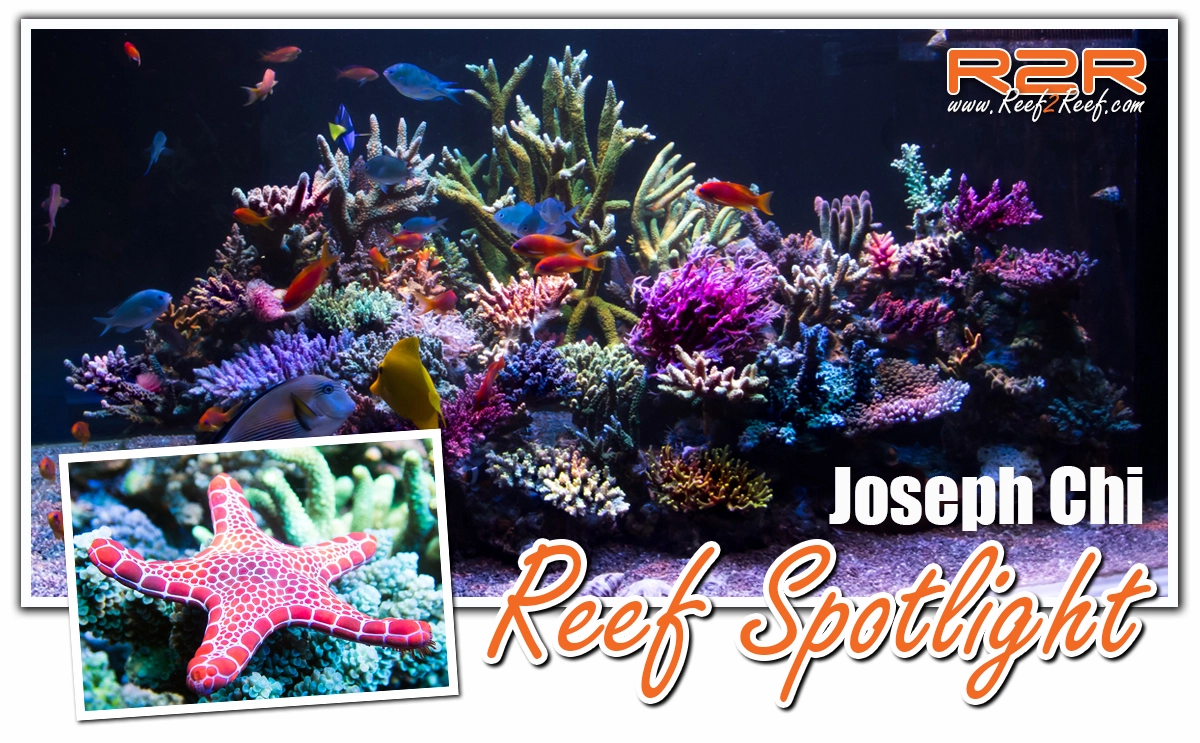Stunning 190-Gallon Reef Tank by Joseph Chi | Reef2Reef

Tank Specifications
Volume: 190 Gallons / 718 Liters
Dimensions (L × W × H):
52.0" ×
35.4" ×
23.6"
132.0cm ×
90.0cm ×
60.0cm
Equipment List
- Salt: Aquaforest
- Salt: KZ
Frequently Asked Questions
How do I maintain the ideal temperature in my reef tank?
To maintain a temperature between 76 to 78°F, use a reliable heater and consider a chiller if necessary. Monitor the temperature regularly using a thermometer or your system controller. Adjust the heater settings as needed to keep the tank within the desired range.
What are the key water parameters I need to monitor for my reef tank?
You should regularly monitor temperature, pH (ideally around 8.2 to 8.6), specific gravity (around 1.025), nitrate (NO3) levels (aim for 0.2 to 0.5 ppm), calcium (Ca) (target between 420 - 450 ppm), alkalinity (around 7.5 dKH), magnesium (Mg) (1400 - 1450 ppm), and phosphate (PO4) (ideally near 0.02 ppm to undetectable levels). Regular checks will help ensure a healthy environment for your corals and fish.
How should I feed my fish in a reef tank?
Feed your fish high-quality dry pellet food three times a day during the lighting period, using an auto feeder for convenience. Additionally, offer frozen mysis shrimp once a week and seaweed every other day for a well-rounded diet.
What should I consider when feeding corals?
When feeding corals, consider using coral food or specialized supplements. Coral nutrition can be supplemented with products like AF ABEV and KZ CV. Proper timing is essential; for example, turn off the skimmer for two hours after feeding to ensure better absorption of nutrients.
What is the best way to perform water changes in a reef tank?
To maximize the benefits of water changes, siphon the dead spots in your tank while performing a 10% water change. Ensure that the new water's parameters (salinity, temperature, alkalinity, calcium, magnesium) closely match those of your tank to prevent stress on the inhabitants.
Why did I give up using filter socks in my maintenance routine?
Filter socks can clog quickly and require frequent cleaning, which can be a hassle. Instead, I use a combination of filter pads and bio filter mats, which are easier to manage and still effective for keeping the tank debris-free.
How should I set up my lighting schedule for a reef tank?
For a balanced lighting schedule, gradually increase light intensity starting at noon until reaching 100% by 2 p.m. Then gradually decrease the light until complete off by 12:30 a.m. This mimics natural day cycles and provides optimal lighting conditions for corals.
What types of lighting should I consider for my reef tank?
A combination of T5 lighting for the main spectrum and LEDs for shimmer effects is advisable. This approach covers wide areas effectively, especially for larger tanks, while also promoting coral growth and health.
How can I effectively care for SPS corals in my reef tank?
To care for SPS corals, maintain stable alkalinity, calcium, and magnesium levels using homemade dosing solutions or automatic dosing pumps. Regular monitoring of these parameters is crucial to keep corals healthy and thriving. Ensure optimal water flow and lighting conditions tailored to each species' needs.
What is the importance of trace elements for corals?
Trace elements like iron, iodine, strontium, and fluorine are essential for coral health as they support growth, coloration, and overall vitality. Use specialized supplements to provide these elements based on your tank's requirements, and monitor coral reaction to adjust dosages as necessary.